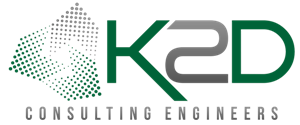
The California Energy Commission (CEC) has published the latest version of the Building Energy Efficiency Standards commonly referred to as Title 24. This encompasses both residential and commercial properties. The Energy Code is modified every three years, containing energy and water efficiency requirements for newly constructed buildings and modifications to existing buildings. The 2022 update provides crucial steps in California’s progress toward achieving 100% carbon neutrality by 2045. The 2022 update applies to building permit applications applied for on or after January 1, 2023.
With the 2022 Energy Code, California has made history once again as the first state to enact a solar + storage requirement. Approved last year through a unanimous vote, the order requires all newly constructed commercial buildings to have a solar photovoltaic (PV) array and an energy storage system (ESS) installed.
Title 24 Changes to Solar Requirements for 2023
Mandating the installation of solar and storage into new commercial buildings will significantly accelerate the implementation of solar and energy storage projects in the non-residential sector. The solar design experts and MEP consultants at K2D are already fully prepared to bring creative and cost-saving solutions that incorporate all the new Title 24 changes.
Important new Title 24 requirements include:
- California is the first state in the United States to require solar power plus energy storage to be integrated into all future commercial structures. Additionally, the new code added a requirement that all new residential construction must be ready for the addition of energy storage.
- The new requirements went into effect on January 1, 2023.
- Commercial buildings that are covered under the new code include hotels, office buildings, high-rise multifamily, clinics, restaurants, medical buildings, retail, grocery stores, financial institutions, unleased tenant spaces,warehouses, convention centers, schools, theaters, and auditoriums.
- The PV is to be sized to meet a target of at least 60% of the building’s load. The target energy storage component should be sized to reduce electricity exports to 10% of the total solar generation.
The Solar Access Roof Areas (SARA) include the area of the building’s roof space capable of structurally supporting a PV system and the area of all roof space on covered parking areas, carports, and all other newly constructed structures on the site that is compatible with supporting a PV system per Title 24, Part 2, Section 1511.2.
There are a few exceptions to these PV requirements that primarily involve very small structures such as the total of all available SARA is less than 3% of the conditioned floor area or the SARA contains less than 80 contiguous square feet.
Title 24 New Lighting and Controls Requirements for 2023
There are many changes in the lighting and controls sections for 2023 along with notable improvements to the clarity and consistency of previous requirements. Changes include updates to outdoor lighting zones, the nonresidential lighting power allowance tables, and demand response. There are also new requirements for occupancy sensing for office spaces. Clarification partly relates to occupancy sensors used with HVAC. Also, multifamily buildings were given their own code sections, adding significantly to the body of the code.
Two prominent Title 24, Part 6 changes are a requirement for occupant-sensing controls in office spaces larger than 250 sq. ft., and new requirements for demand-responsive controls.The new energy code requires occupant sensors to control general lighting in offices larger than 250 sq. ft.Additionally, each sensor’s zone must be no larger than 600 sq. ft. These requirements align with provisions in the 2018 and 2021 versions of the International Energy Conservation Code.
Sensors can automatically turn the zone lighting to any level (including full power) when occupancy is detected. Dimming must happen within 20 minutes of an individual control zone being unoccupied.It must uniformly reduce lighting power by at least 80% of full power. When a single zone is occupied, all other zones can remain illuminated at up to 20% of full power. Within 20 minutes of a sensor status indicating all zones in the controlled area are vacated, the system must turn off all lights in all zones.
K2D lighting designers find creative solutions to these code revisions based on the needed lighting layout. This might include zones smaller than the 600sq. ft. maximum. We also anticipate the use of more luminaire-level lighting control (LLLC) and wireless networking capabilities. All of this must be considered along with the new requirements for photovoltaics and battery storage. Designers, installers, and facility operators need to understand the totality of these changes before they begin working on projects that begin permitting after Jan. 1, 2023.
Other Notable Changes Coming in 2023
Title 24 is a complex energy code that continues to be revised. Although K2D Consulting engineers are well aware of and up to datewith the changes, this article only highlights several key modifications. Here are a few more worth noting.
- Mandatory efficiency increases for many cooling systems, cooling towers, furnaces, and boilers. Also, all the minimum efficiency requirement tables are updated.
- New efficiency tables for DOAS, computer rooms, heat pumps, and heat recovery chillers.
- The types of rooms in which mandatory occupant sensor ventilation controls is expanded.
- The code defines new prescriptive requirements for heat pump water heating and/or instantaneous electric water heating in some school buildings (based on size) and in most climate zones. Similar requirements apply to most dwelling units, depending on climate zone.
- Receptacles must be connected to the demand-responsive lighting controls when both technologies are present/required on the project.
- Outdoor lighting zone definitions have changed.
- Mandatory refrigeration requirements, including automatic door closers in refrigerated warehouses.
Please contact us to discuss what the 2023 changes to Title 24 mean to your building project.
K2D — Helping Build a Greener Tomorrow, Today
At the core of K2D are:
- Title 24 Compliance & Energy Analysis
- Commissioning Services
- LEED Certification
- Facilities System Design
- MEP Services
- Solar Design
- Electrical design
- Heating, A/C & Ventilation Design
- Plumbing Design
- Fire and Sprinkler Design
K2D provides specific solutions to your project challenges. Our MEP consultants are highly trained and experienced. We work closely with architects and owners to provide successful coordination of building systems. K2D provides the best design solutions that are cost-effective today and well into the future. Today’s facilities must be built to last many decades with the foresight to ensure a maximum lifecycle.
For further information or to schedule a consultation please contact K2D at 310.935.3773 or visit www.K2D.com to learn more.
